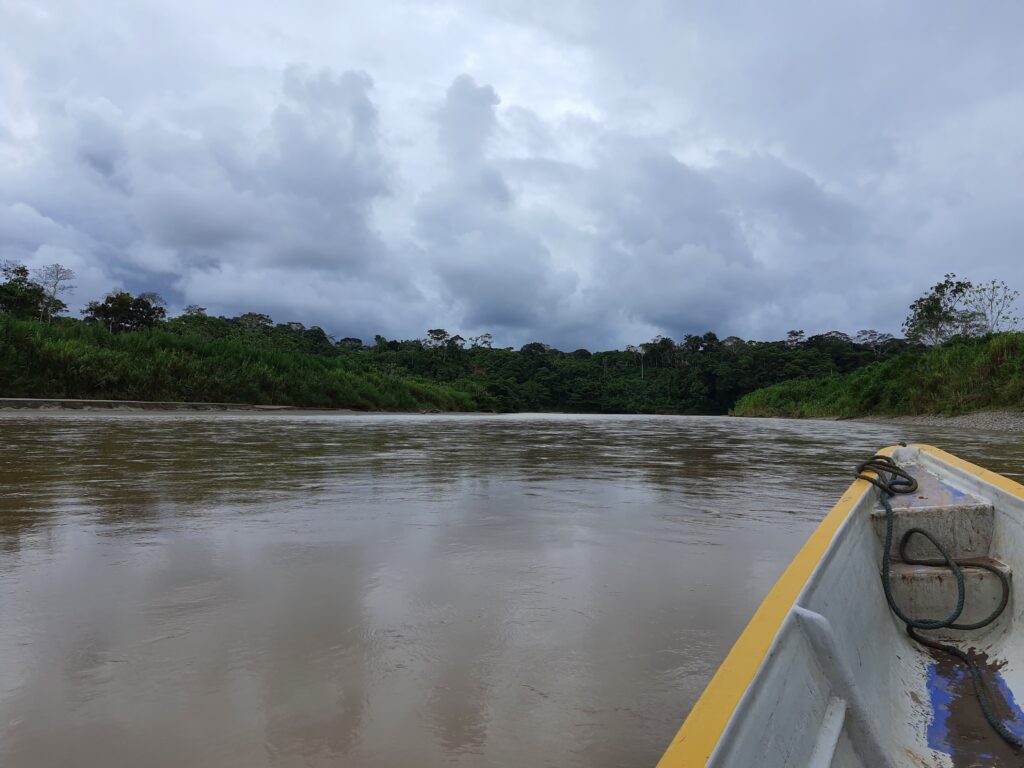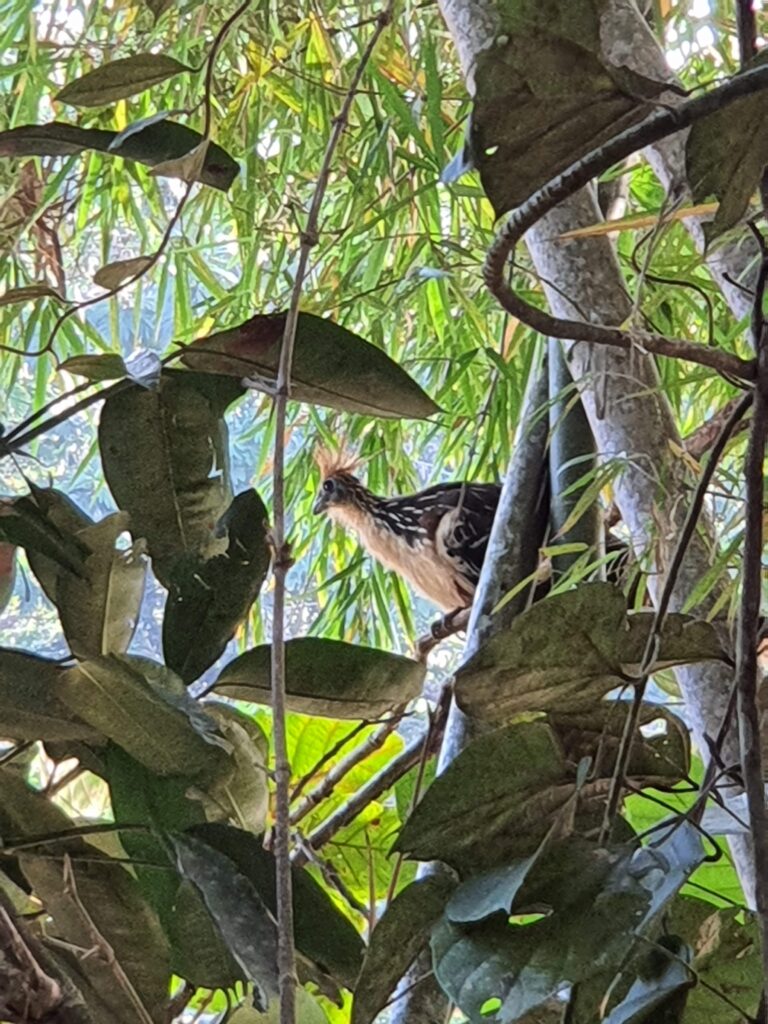When Sarayaku smiles
Ana Cristina Suzina, Leverhulme Early Career Fellowship
The rain was falling so much that my poncho was soaked, and I kept my head down, so as to avoid feeling the drops on my face, accelerated by the wind and the speed of the boat, going down the Bobonaza River1. The young woman next to me, without poncho or hat, was draining the water that had accumulated in the bottom of the boat with a plastic pot. It all seemed a little chaotic, improvised, maybe dangerous, but I would look at Nelson2 , standing at the bow of the boat, probing the riverbed with a long wooden stick, and he was smiling. And all it took was the rain to subside a little for the conversation to liven up among the Kichwa on the boat. And from the smile, they went to laughing and even to laughing out loud. It was clear that the mood there had another nature, that the disposition to deal with life was different, lighter, happier, I dare say.

Credit: Dr Ana Cristina Suzina
It doesn’t stop being weird. A people violently attacked, in a territory seriously threatened, and they smile. I don’t understand a bit of Kichwa, but the tone of the conversations suggested good humour, an uplifting, confident presence of mind.
They laugh a lot during their confraternizations around the chicha3, they laugh easily at each other’s stories, an almost innocent laugh, from someone who has not yet lost the ability to be seduced by simple things – like the noises made up by Rosa imitating the animals of the forest, one night, at the guest house.
And before this report sounds like a self-help text about the power of laughter, it is important to make it clear that this vestige of innocence is not alienating at all. On the contrary, it comes from somewhere else, which could be the political horizon of the idea of poverty or the shared sense of struggle, or probably both.

Credit: Dr Ana Cristina Suzina
In an interview, the Kuraka4 Mario Yaucen Renache talked to me about the invention of poverty as a project to keep people dissatisfied and, therefore, consuming things they don’t need as if this could save them from that said poverty. It is true that, in Sarayaku, most houses do not have electricity, running water or sanitation. But the conversation with Mario suggests a clear distinction between access to rights and a decent life, on the one hand, and an idea of poverty to motivate consumption, on the other.
Living with the Kichwa people of Sarayaku made me think that they laugh because they genuinely find joy in the simple things in life: being with the family, sharing chicha, having good land to plant and harvest bananas and manioc, getting to know the plants that keep them healthy, owning the time that allows them to share their existence with nature and all visible and invisible beings. And they also laugh as a kind of alliance that keeps them united in the struggle for the rights they do want to access: mainly, respect for their territory and their culture, access to public goods and services like all citizens.
Sarayaku’s smile reminded me of many other communities wounded in their dignity that I’ve come to know in my work as a journalist and later a researcher over the past 20 years. I remembered their songs, the small gestures of kindness, their awareness, faith and strength.
This smile is not, however, any palliative for pain and absences, because these are properly mourned and problematised. It is not neither the very expression of intellectually fabricated resilience as a remedy that explains the ability to bear and resist of impoverished populations. Nor it is the smile of the “good Indian”, as the idealized profile of the docile indigenous who accepts to submit to the colonialism of body and mind.

Credit: Dr Ana Cristina Suzina
Sarayaku’s smile is revolutionary, because it recognizes the value of what is considered poor or outdated; it recognizes the value of what really makes sense for these communities. And it is also revolutionary because it humanizes the struggle, making it bearable in the reciprocity of indignation and hope, and forging the amalgam that permanently recalls the meaning of these efforts.
Sarayaku’s smile is a symbol of resistance in a world lacking meaning. It is not there to be appreciated as the exclusively aesthetic expression of the way of being of a people – despite being a defining part of who these people are as subjects of their history. It can only be understood with the keys given by their reality. And, being so, it is a letter, an invitation to each person for a kind of purification, of distillation, that allows recognizing and valuing what really matters to live a dignified life and to allow the dignity of the diversity of life forms.
Footnotes
- Extract from personal diaries from the field research “Agency and appropriation of digital media by young people in riverside communities in the Amazon region”, carried out in April 2022, in the community of Sarayaku, province of Pastaza, Ecuador. This research is funded by the Leverhulme Trust (ECF-2020-194). For more information about Sarayaku, visit https://sarayaku.org/ .
- People who were not formally interviewed for the research are mentioned only by first names, so as to avoid individual identification.
- Artisanal beverage made of manioc, that is commonly shared in collective meetings.
- Kuraka is a political and organizational position held by someone chosen by the community for a period of one year; the Kuraka is responsible for calling collective efforts and meetings, for sharing important information with the families of their community, and represents it in the Tayjasaruta, that is the main decision-making instance of government in Sarayaku. There is one Kuraka for each of the six communities that constitute Sarayaku.
Loughborough University London
Blogging everything that’s happening at Loughborough University London